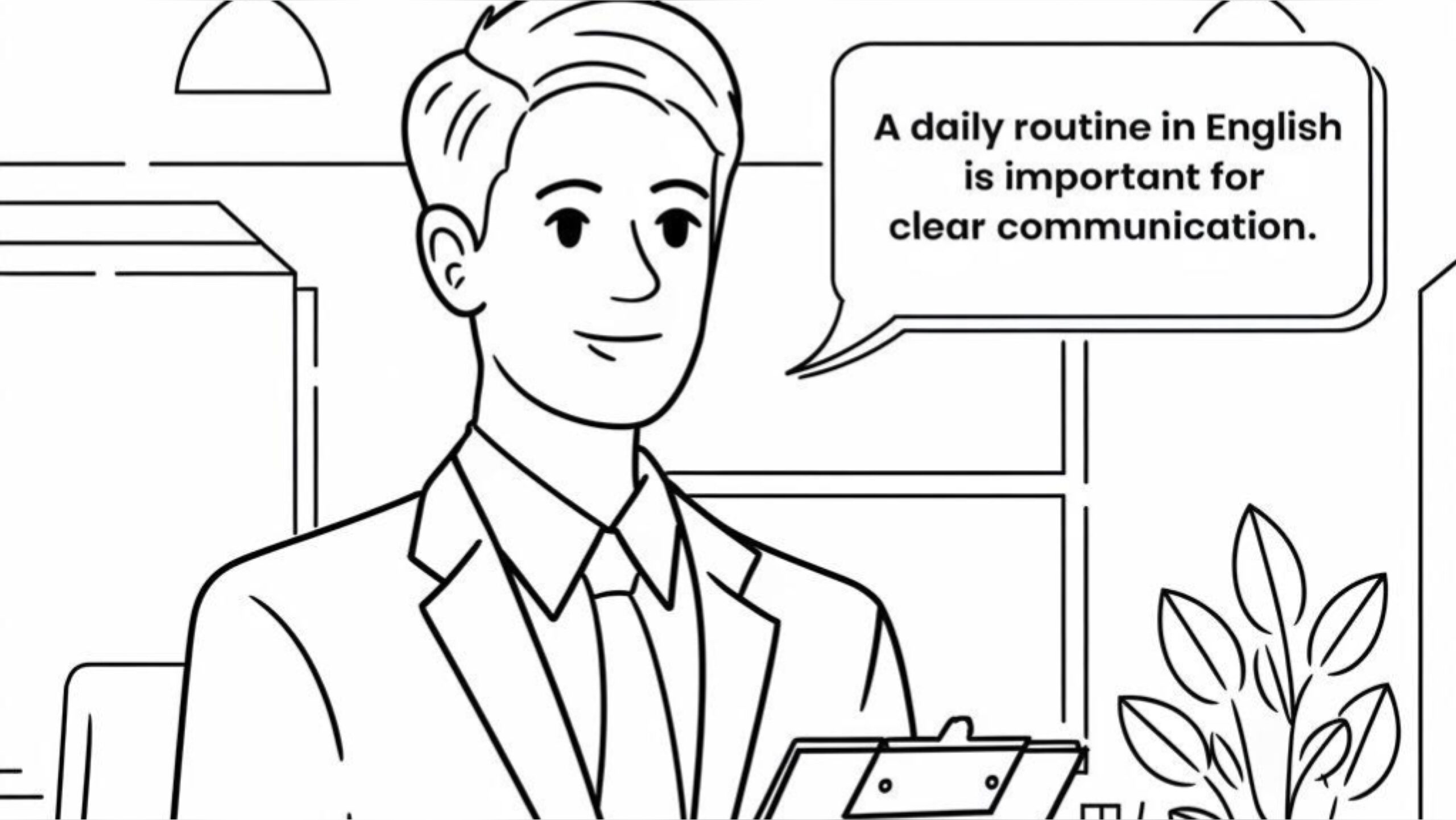Introduction
Everyday conversations are the foundation of any language, and mastering them in English is an essential step toward effective communication. These simple, daily exchanges allow you to connect with others, build relationships, and navigate new environments with confidence. Whether it’s greeting someone in the morning, making small talk with a coworker, or asking for directions in an unfamiliar place, everyday conversations make life easier and more enjoyable.
For beginners learning English, mastering these dialogues is particularly important. They provide a starting point for improving speaking and listening skills while building confidence in real-world interactions. The ability to hold basic conversations can help you make friends, express your needs clearly, and solve problems efficiently. Over time, these small steps will lead to greater fluency and comfort in the language.
In this guide, we’ll take you through the most common types of everyday conversations, including greetings, small talk, asking for help, and using polite expressions. You’ll learn essential phrases, tips for practicing, and examples of real-life dialogues. By the end of this guide, you’ll have the tools and confidence to start speaking English in everyday situations with ease. Let’s begin your journey to mastering everyday conversations!
2. Greetings
2.1 Why Greetings Are Important
Greetings play a vital role in human communication. They are often the first words exchanged in any conversation, and as such, they set the tone for the interaction. A warm and friendly greeting can make a lasting impression, helping you come across as polite, approachable, and confident. For learners of English, mastering greetings is a key step toward engaging in meaningful conversations and building relationships.
The way people greet each other varies significantly across cultures. In English-speaking countries, greetings are typically simple and straightforward, such as “Hello” or “Good morning.” However, the tone and context can make a difference. For example, formal greetings are often used in professional settings or when meeting someone for the first time, while informal greetings are more common among friends and family. Understanding these variations can help you adapt your greetings to different situations and show cultural awareness.
2.2 Common Phrases for Greetings
Formal Greetings:
Formal greetings are used in professional environments, official gatherings, or when speaking to someone older or in a position of authority. These phrases show respect and politeness:
•“Good morning!” (used before noon).
•“Good afternoon!” (used after noon but before evening).
•“Good evening!” (used after 5 or 6 PM).
•“How do you do?” (used in formal settings, often accompanied by a handshake).
•“It’s nice to meet you.”
Informal Greetings:
Informal greetings are casual and typically used with friends, family, or peers:
•“Hi!”
•“Hello!”
•“Hey!”
•“What’s up?” (a friendly, casual greeting).
•“How’s it going?”
2.3 Responses to Greetings
Positive Responses:
When someone greets you, a polite response helps keep the conversation flowing:
•“I’m fine, thank you. And you?”
•“I’m doing great, thanks!”
•“Not bad, thanks!”
Neutral or Negative Responses (keeping polite):
If you’re not feeling well or are having a challenging day, you can still respond politely without going into too much detail:
•“I’ve had better days.”
•“I’m okay, just a bit tired.”
•“Not too great, but thanks for asking.”
2.4 Practice Dialogues for Greetings
Formal Greeting Example:
•Person A: “Good morning! How do you do?”
•Person B: “Good morning! I’m doing well, thank you. And you?”
•Person A: “I’m fine, thank you. It’s nice to meet you.”
Informal Greeting Example:
•Person A: “Hey! What’s up?”
•Person B: “Not much, just relaxing. How about you?”
•Person A: “Same here. Just enjoying the weekend.”
These dialogues provide a simple yet effective way to practice greetings in different contexts.
2.5 Tips for Practicing Greetings
1.Use Role-Play:
•Practice greetings with a language partner, tutor, or even a friend.
•Create scenarios, such as meeting someone at work or bumping into a friend at a coffee shop.
2.Record Yourself:
•Record yourself saying greetings and responses.
•Listen to your tone and pronunciation to identify areas for improvement.
3.Observe Real-Life Examples:
•Watch English-language TV shows or movies and note how characters greet each other in various situations.
•Pay attention to formal and informal contexts.
4.Repetition Is Key:
•Repeat greetings daily until they feel natural and automatic.
5.Practice with Flashcards:
•Write different greetings and responses on flashcards.
•Mix them up and practice forming dialogues using the phrases.
By mastering greetings, you’ll build a solid foundation for engaging in everyday conversations. Keep practicing and experimenting with different phrases, and soon you’ll feel comfortable starting conversations in any setting!
3. Making Small Talk
3.1 What Is Small Talk?
Small talk refers to light, casual conversations people have in everyday situations. It is not about deep or serious topics but rather about building rapport, filling silence, and making social interactions more comfortable. For English learners, small talk is a valuable skill that helps them practice speaking and listening while building confidence in communication.
Importance of Small Talk in Casual Settings:
•Helps break the ice and creates a friendly atmosphere.
•Opens the door to deeper conversations.
•Shows politeness and interest in others, which strengthens social connections.
Examples of Situations Where Small Talk Happens:
•Waiting in line at a coffee shop or grocery store.
•Attending a party or social event.
•Riding public transportation or sharing a cab.
•Chatting with coworkers during breaks or meetings.
By recognizing these opportunities, learners can make small talk a regular part of their daily routine.
3.2 Common Topics for Small Talk
Small talk topics are usually neutral and easy to discuss. Here are some popular options:
1. The Weather:
The weather is universally relatable and a safe choice for starting a conversation.
•“It’s a beautiful day, isn’t it?”
•“Looks like it might rain later.”
•“I can’t believe how cold it is today!”
2. Hobbies:
Talking about hobbies is a great way to find shared interests and keep the conversation flowing.
•“What do you like to do in your free time?”
•“Do you enjoy cooking or reading?”
•“I’ve recently started painting. What about you?”
3. Work or Studies:
In professional or academic settings, asking about work or studies is common and appropriate.
•“What do you do for a living?”
•“Are you working on any interesting projects?”
•“What are you studying right now?”
Other common topics include recent travels, favorite foods, or current events (as long as they are non-controversial).
3.3 Phrases and Questions for Small Talk
To keep small talk going smoothly, use these phrases:
Open-Ended Questions:
These encourage detailed responses and help the conversation last longer.
•“How’s your day going?”
•“What have you been up to lately?”
•“How do you usually spend your weekends?”
Expressions to Show Interest:
These phrases show that you’re listening and engaged in the conversation.
•“That sounds interesting!”
•“Oh, really? Tell me more about that.”
•“I’d love to hear more about your experience.”
3.4 Practice Dialogues for Small Talk
Example 1: Talking About the Weather
Person A: “It’s such a sunny day today, isn’t it?”
Person B: “Yes, it’s lovely! It’s perfect for a walk in the park.”
Person A: “Absolutely. Do you like spending time outdoors?”
Example 2: Discussing Hobbies
Person A: “What do you like to do in your free time?”
Person B: “I enjoy reading, especially mystery novels. How about you?”
Person A: “That’s interesting! I like photography. Maybe I should try reading more mysteries.”
These dialogues are simple and easy to practice. Role-play them with a friend or language partner to improve your fluency.
3.5 Common Mistakes to Avoid
While making small talk, be mindful of these mistakes:
1. Discussing Overly Personal or Controversial Topics:
Avoid sensitive subjects like money, politics, or religion, as they may make the other person uncomfortable.
2. Forgetting to Listen Actively:
Focus on what the other person is saying instead of planning your next question. Nod, smile, and use expressions like “I see” or “That’s great!”
3. Talking Too Much About Yourself:
Small talk is a two-way exchange. Ask follow-up questions to keep the conversation balanced.
3.6 Tips for Making Small Talk
Here are some strategies to master small talk:
•Observe Native Speakers: Pay attention to how English speakers start and maintain casual conversations. You can watch TV shows, listen to podcasts, or observe people in real life.
•Practice with Friends or Language Partners: Role-playing scenarios like meeting a new colleague or chatting with a neighbor will help you feel more confident.
•Carry Conversation Starters: Memorize a few simple questions or phrases so you’re always prepared to start a conversation.
•Stay Relaxed: Remember, small talk is meant to be light and easy. Don’t stress about being perfect—your effort to connect matters more than anything else.
By practicing consistently and following these tips, you’ll soon become comfortable engaging in small talk in various situations!
4. Asking for Help
4.1 Why It’s Important to Ask for Help Politely
Asking for help is an essential skill in everyday conversations, especially for language learners. Doing it politely shows respect, builds positive relationships, and increases the chances of getting assistance.
Benefits of Asking for Help Politely:
•Creates a good impression and demonstrates good manners.
•Encourages others to respond kindly and supportively.
•Helps avoid misunderstandings and awkward situations.
When learners know how to ask for help properly, they feel more confident and capable of handling different situations.
4.2 Common Situations Where You Might Need Help
Here are a few everyday scenarios where asking for help is common:
1. Finding a Location:
You might need to ask for directions in a new city or unfamiliar area.
•“Excuse me, can you tell me where the nearest bus stop is?”
•“Could you point me to the post office, please?”
2. Asking for Instructions:
Whether you’re learning to use a device or completing a task, asking for instructions can be helpful.
•“Can you show me how to use this machine?”
•“Would you mind explaining how to fill out this form?”
3. Requesting Information:
Asking for clarification or more details is a common way to seek help.
•“Could you explain what this means?”
•“Can you tell me what time the shop opens?”
By preparing for these situations, learners can respond confidently when help is needed.
4.3 Phrases for Asking for Help
Polite language is key when asking for help. Here are some useful phrases:
1. Polite Phrases to Use:
•“Could you please help me with…?”
•“Would you mind giving me some advice?”
•“I’d really appreciate it if you could…”
•“May I ask for your assistance?”
2. Direct but Polite Requests:
•“Can you show me how to…?”
•“Do you know where I can find…?”
These phrases make your request sound respectful and increase the likelihood of receiving help.
4.4 Responses to Help Requests
Learning how to respond to help requests is equally important, whether you’re accepting or declining.
1. Positive Responses:
•“Of course, I’d be happy to help!”
•“Sure! What do you need?”
•“No problem. Let me help you with that.”
2. Negative but Polite Responses:
If you’re unable to help, respond kindly to avoid offending the other person.
•“I’m sorry, I’m not sure how to help with that.”
•“I wish I could help, but I don’t know the answer.”
By practicing these responses, learners can handle both sides of a help-related conversation.
4.5 Practice Dialogues for Asking for Help
Here are two example conversations to help learners practice:
Example 1: Asking for Directions
Person A: “Excuse me, could you tell me how to get to the train station?”
Person B: “Sure! Go straight for two blocks, then turn left. The station is on your right.”
Person A: “Thank you so much for your help!”
Person B: “You’re welcome!”
Example 2: Asking for Help at a Store
Customer: “Excuse me, could you help me find the bread aisle?”
Employee: “Of course! It’s right over there, next to the dairy section.”
Customer: “Thank you. I really appreciate it.”
Employee: “No problem! Let me know if you need anything else.”
These dialogues are simple and effective for beginner learners to practice.
4.6 Tips for Practicing Asking for Help
Here are some strategies to improve this skill:
1.Start with Simple Scenarios:
Practice asking for directions, borrowing items, or requesting basic instructions before moving on to more complex situations.
2.Use Role-Playing:
Practice with a friend or language partner by taking turns asking for and offering help in different scenarios.
3.Watch Videos:
Observe how native speakers make polite requests in English. YouTube tutorials, movies, or TV shows can be great resources.
4.Focus on Tone and Body Language:
Being polite isn’t just about words—your tone and body language matter too. Smile, maintain eye contact, and speak with a friendly tone.
By practicing regularly, learners will feel confident asking for help and navigating various social situations with ease!
5. Polite Expressions
5.1 Why Politeness Matters in Everyday Conversations
Politeness is a key aspect of communication that can make conversations more pleasant and effective. It not only helps to avoid misunderstandings but also fosters goodwill and respect between people.
Benefits of Being Polite:
•Avoiding misunderstandings: Politeness softens requests, criticism, or apologies, reducing the chance of offending others.
•Building goodwill and relationships: Polite expressions show respect, making others more willing to help or engage with you.
For beginners learning English, mastering polite expressions makes communication smoother and builds confidence in different social situations.
5.2 Common Polite Expressions and Their Uses
Here are some commonly used polite expressions and examples of when to use them:
1. Saying Thank You:
Expressing gratitude is an essential part of politeness.
•“Thank you so much!” – For significant help or favors.
•“I really appreciate it.” – To show heartfelt gratitude.
•“Thanks a lot!” – A casual way to say thank you.
2. Apologizing:
Apologies help maintain harmony when mistakes are made or inconveniences occur.
•“I’m sorry to bother you.” – Used when interrupting or asking for help.
•“I apologize for the inconvenience.” – A formal way to acknowledge an issue.
•“My apologies.” – Short and polite, often used in formal contexts.
3. Making Requests:
Polite requests soften demands and make people more likely to respond positively.
•“Could you kindly…?” – For polite and formal requests.
•“Would you mind…?” – Commonly used to ask for a small favor.
•“May I ask you to…?” – A respectful way to make a request.
By learning and practicing these expressions, learners can navigate a variety of situations with ease and courtesy.
5.3 Practice Dialogues Using Polite Expressions
Here are two beginner-friendly dialogues to demonstrate polite expressions in action:
Example 1: Thanking Someone for Help
Person A: “Excuse me, could you help me carry this bag?”
Person B: “Of course! Let me grab it for you.”
Person A: “Thank you so much! I really appreciate it.”
Person B: “You’re welcome. Happy to help!”
Example 2: Apologizing for Being Late
Person A: “I’m so sorry for being late. The bus was delayed.”
Person B: “That’s okay. Thanks for letting me know.”
Person A: “I apologize for the inconvenience. I’ll make sure it doesn’t happen again.”
Person B: “No problem, it happens. Let’s get started.”
These dialogues provide practical examples for learners to imitate in real-life situations.
5.4 Tips for Mastering Polite Expressions
1.Learn Variations to Avoid Repetition:
Using different ways to express gratitude, apologies, or requests makes conversations more dynamic and natural. For instance, instead of always saying “Thank you,” try “I’m really grateful” or “Thanks a lot.”
2.Practice with Tone and Body Language:
Politeness is not just about words. A friendly tone, a smile, and positive body language enhance the impact of polite expressions.
3.Observe Native Speakers:
Pay attention to how native speakers use polite expressions in movies, TV shows, or real-life conversations. Mimicking their style can improve both fluency and confidence.
4.Practice Role-Playing:
Practice polite conversations with a partner. Take turns making requests, apologizing, or thanking each other.
By integrating polite expressions into daily practice, learners can develop strong communication skills and leave a positive impression in any interaction.
6. Practice Activities
Practice is essential for mastering everyday conversations in English. The following activities are designed to help learners build confidence and improve fluency through repetition and creativity:
6.1 Role-Play Exercises with a Partner or Tutor
Engaging in role-play is a fun and effective way to practice conversational English. Choose different scenarios, such as:
•Greeting someone at a party.
•Making small talk while waiting in line.
•Asking for help in a store.
Take turns playing different roles (e.g., a customer and a shop assistant) to develop versatility. If a partner isn’t available, learners can record themselves and listen back to assess their tone and pronunciation.
6.2 Flashcards with Common Phrases and Expressions
Flashcards are a great way to memorize polite expressions and conversational phrases. Create a set of flashcards with:
•A phrase or question on one side (e.g., “Could you help me with this?”).
•Its meaning or a response on the other side (e.g., “Of course! I’d be happy to help!”).
Quiz yourself regularly, or ask a friend to test you. Focus on both speed and accuracy to make the expressions second nature.
6.3 Writing and Practicing Short Dialogues
Write simple dialogues based on everyday situations, such as:
•Introducing yourself to a neighbor.
•Discussing hobbies with a colleague.
•Asking for directions.
Once written, practice speaking them aloud. This improves pronunciation, intonation, and confidence in using full sentences.
By combining these activities, learners can reinforce their understanding of everyday English conversations while building the skills needed to use them effectively in real-life situations.
7. Conclusion
Mastering everyday conversations in English is a vital step for building confidence and improving communication skills. This guide has covered essential topics like greetings, making small talk, asking for help, and using polite expressions, providing you with the tools to navigate daily interactions with ease.
Remember, consistent practice is the key to success. Incorporate these phrases and tips into your daily routine, whether through role-play, writing dialogues, or real-life interactions. With time and effort, you’ll find yourself speaking English naturally and confidently, opening the door to meaningful connections and new opportunities. Keep practicing—you’ve got this!




